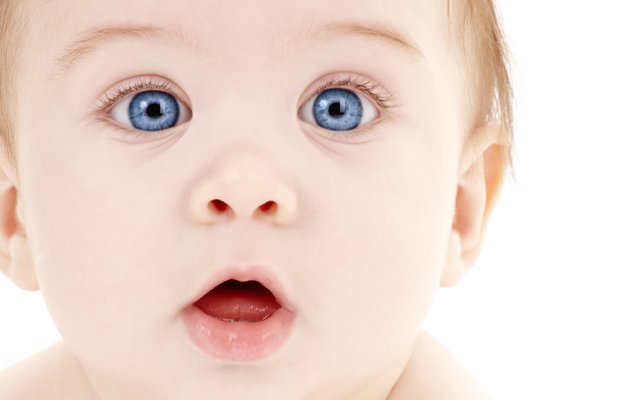Do babies always have blue eyes at birth?
Take a look at a random cradle and it looks like the baby always has blue eyes. Is blue the standard color on delivery? And why is the final shade only determined in childhood?

Blue eyes are indeed common, but it is a misunderstanding that all children with that color come into the world. American scientists recorded the eye color for four hundred white twins for six years and noted that 10 percent of the children had dark eyes right after birth. Most of the children, according to that study, the eye color gradually darkens during the first six years of life. This phenomenon also occurs in African and Asian children, except that they usually have light brown or light gray as a starting point. As a result, the effect is less noticeable with them.
The discoloration is caused by the pigment melanin. The iris has two layers of pigment. The back layer already contains pigment at birth, it is the front layer that makes the difference. The number of dye cells in that layer is the same for everyone, but the amount of dye produced by the cells varies. If the dye cells produce little melanin, the eyes remain blue, if they produce a lot, the eyes turn brown. A green color is in between.
Why extra melanin is formed only after birth is unclear. In the womb, pigment has no function, because there is no light. The story goes that production is enhanced by the influence of light, but that can be a bit of a talk. There are children who immediately have dark eyes and children whose eye color does not change. That would indicate that it is an ordinary development process, with the corresponding variation.
Not only the amount of melanin that is made is genetically fixed, also the speed with which the eyes change color. There is a difference between boys and girls, according to the twin study. In girls, blue eyes become brown more often than boys. After six years, half of the girls had brown eyes and a third of the boys. That color change also happens faster in girls. The researchers draw a comparison with the physical maturation, which goes smoother in girls.
The genetic construction drawing for eye color turns out to be more complicated than was long thought. The idea that brown is the dominant gene and blue subordinate needs to be nuanced: there are many genes of interest for the iris color. A genetic abnormality can lead to different eye colors.
But even in people with the same eye color, two irises are never identical. Look at another one deep in the eye. The color is slightly different, but also those freckles in the eyes, the pigment spots, are unevenly distributed.
@OriginalWorks
The @OriginalWorks bot has determined this post by @itzloloman to be original material and upvoted it!
To call @OriginalWorks, simply reply to any post with @originalworks or !originalworks in your message!
Congratulations @itzloloman! You received a personal award!
Click here to view your Board of Honor
Congratulations @itzloloman! You received a personal award!
You can view your badges on your Steem Board and compare to others on the Steem Ranking
Vote for @Steemitboard as a witness to get one more award and increased upvotes!